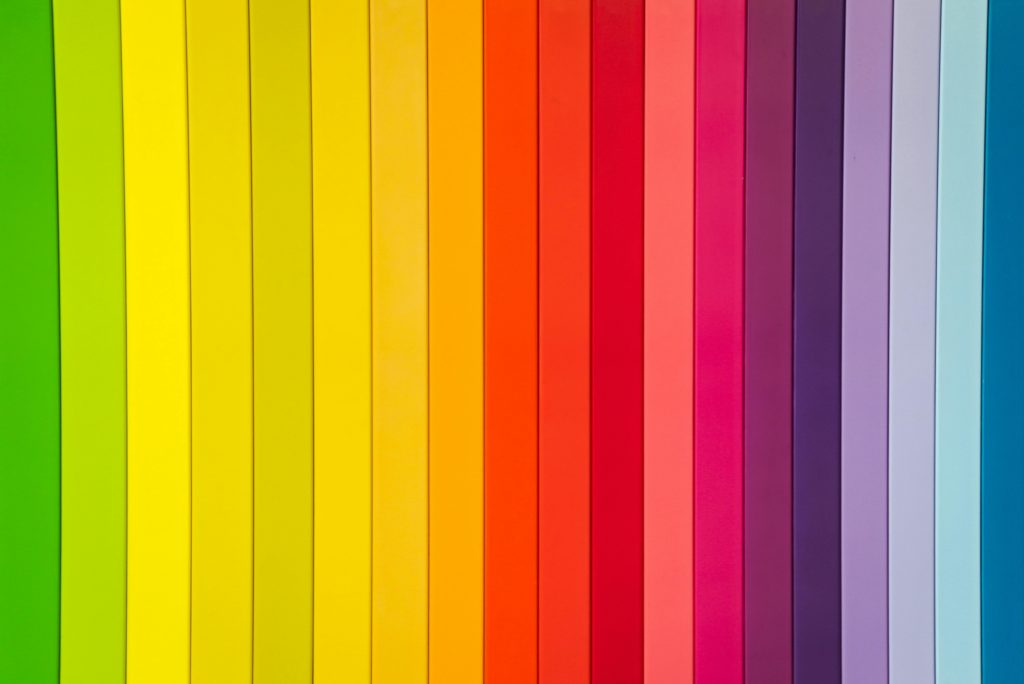How Color Psychology Impacts UX Design
In the world of UX design, every detail matters. From layout and navigation to the very colors you choose, each element plays a crucial role in shaping the user experience. But have you ever considered the impact color has on how users interact with your brand?
Color psychology delves into the fascinating science of how colors influence our emotions and behaviors. As UX professionals, understanding this powerful tool allows us to craft designs that resonate deeply with your target audience.

Colors & Emotions: A spectrum of influence
Why is Color Psychology Important for UX?
Think about your favorite websites or apps. What colors come to mind? Chances are, the color palette isn’t just a random selection – it’s a strategic decision designed to evoke specific emotions and guide user behavior.
Consider a calming blue palette used in a meditation app, encouraging relaxation. Or the vibrant reds and yellows of a fast-food chain website, subconsciously stimulating your appetite. Color is a silent language that speaks volumes to your users, influencing their perception of your brand and ultimately, their interactions with your product.
Leveraging Color Psychology for Brand Communication
Brands have long understood the power of color. Here’s how they leverage color psychology:
- Emotional associations: Different colors evoke distinct emotions. Red ignites passion and excitement, while blue fosters trust and tranquility. Brands can utilize these associations to create a desired mood and connect with their target audience on an emotional level.
- Brand Identity: Colors become synonymous with a brand. Think of the iconic red of Coca-Cola or the calming blue of Facebook. Choosing the right color palette helps establish a strong brand identity and build recognition.
- User Guidance: Colors can subconsciously guide user behavior. A bright call to action button in a contrasting color grabs attention, while softer tones might be used for informational sections where users need to focus and read.
Unlocking the Power of Color in Your Designs
Understanding color psychology empowers you to make informed design decisions.
By strategically implementing color psychology principles, you can create user experiences that are not only aesthetically pleasing but also functional and user-friendly.

13 comments
purchase androxal australia
August 16, 2025 at 5:04 pmcheapest buy androxal purchase uk
order androxal low cost
purchase enclomiphene generic enclomiphene
August 16, 2025 at 5:08 pmhow to buy enclomiphene cheap where
buying enclomiphene generic efficacy
acheter rifaximin en ligne
August 17, 2025 at 2:03 amhow to buy rifaximin generic london
cheapest buy rifaximin buy dublin
ordering xifaxan canada with no prescription
August 17, 2025 at 2:09 amcheap xifaxan generic version
buying xifaxan cheap from canada
how to buy staxyn cheap canada pharmacy
August 17, 2025 at 3:36 amget staxyn price uk
cheapest buy staxyn cheap wholesale
how to buy avodart cost effectiveness
August 17, 2025 at 3:36 ambuy avodart and cealis online from canada
get avodart generic switzerland
buying dutasteride cheap from usa
August 17, 2025 at 4:55 amhow to buy dutasteride cost australia
order cheap dutasteride
get flexeril cyclobenzaprine canada mail order
August 17, 2025 at 4:56 ambuy cheap generic online flexeril cyclobenzaprine
buy cheap flexeril cyclobenzaprine uk delivery
discount gabapentin australia to buy
August 17, 2025 at 5:51 amordering gabapentin cheap generic uk
how to buy gabapentin cost at walmart
buy cheap fildena generic germany
August 17, 2025 at 6:00 amordering fildena buy japan
how to buy fildena usa suppliers
buying itraconazole buy from canada
August 17, 2025 at 6:45 amorder itraconazole cheap online in the uk
comprar itraconazole online
obecné kamagra online nejlepší
August 17, 2025 at 6:53 amnízká cena kamagra bez lékařského předpisu
kamagra bez předpisu
où pouvez-vous obtenir kamagra sans une perskripion
August 17, 2025 at 7:28 amlivré kamagra
acheter kamagra du canada
Comments are closed.